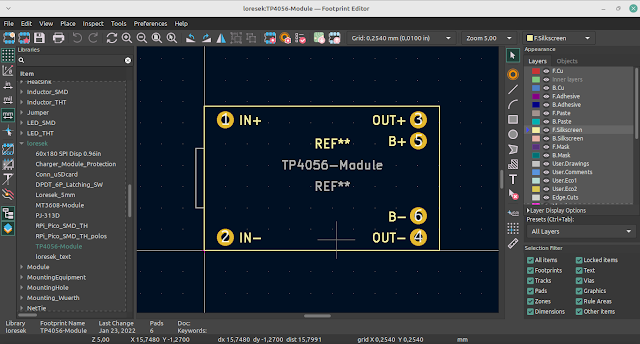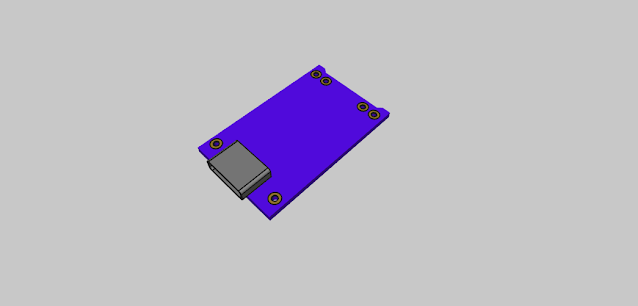Integrated Serial Adapter (ISA) – A One-Stop Solution for USB-to-Serial, ICSP, and UPDI Programming
Microchip's megaAVR microcontrollers have garnered much love among makers for their affordability and ease of use, powered by libraries like megaTinyCore and megaCoreX. But anyone navigating the tumultuous waters of recent chip shortages knows the struggle: finding the perfect microcontroller isn't always easy. Sometimes, older AVR chips are the only ones available, and working with both new and old chips creates a programming headache due to their differing interfaces.
 |
| Integrated Serial Adapter (ISA) KiCAD Rendered PCB - Top |
The Integrated Serial Adapter (ISA) tackles this issue head-on, elegantly combining multiple programming modes into one compact device. Designed for versatility and ease of use, ISA offers a seamless experience for programming both old and new AVR microcontrollers, as well as ESP8266 and ESP32 devices. Let’s dive into what makes this board a game-changer for hobbyists and professionals alike.
Why ISA? The Problem It Solves
Old vs. New AVR Programming Interfaces:
Traditional AVR chips use In-Circuit Serial Programming (ICSP), while newer Microchip AVR chips rely on UPDI. These two methods are incompatible, often requiring separate programming devices.Serial Programming Needs for ESP Chips:
ESP8266 and ESP32 microcontrollers demand a serial programmer with 3.3V compatibility—a further inconvenience if you’re switching between devices.
ISA: A Unified Solution
The ISA solves these challenges by integrating ICSP, UPDI, and serial passthrough programming into a single device. With an intuitive switch-based mode selection and voltage adjustment, ISA streamlines programming tasks.
Key Features:
- ICSP and UPDI Programming: Combine the two methods into one board.
- Voltage Selection: Switch between 5V and 3.3V to power target devices.
- Serial Passthrough: Enables debugging and normal programming for ESP chips.
- Compact Design: Uses the CH340N chip, a smaller cousin of the popular CH340G.
How It Works: A Closer Look
Serial Programming:
- Powered by the CH340N chip, ISA supports serial communication with most microcontrollers.
- Unlike its predecessor, the CH340N is compact and includes a built-in clock source.
- A dedicated external 3.3V regulator ensures the target device gets adequate power even for low-voltage applications.
UPDI Programming:
- Leverages the SerialUPDI method, which requires only a few passive components to convert a serial converter into a UPDI programmer.
- The addition of a Schottky diode and a 470-ohm resistor ensures compatibility with UPDI devices.
ICSP Programming:
- A pre-flashed ATtiny814 microcontroller handles ICSP programming.
- The ATtiny runs at 10MHz, supporting both 5V and 3.3V modes.
- Higher-capacity variants of the ATtiny chip can also be used for added flexibility.
Mode Switching:
- DPDT switches allow seamless transitions between ICSP, UPDI, and serial modes.
- Another switch toggles between 5V and 3.3V power delivery, simplifying multi-device use.
Development Timeline and Tools
 |
| Integrated Serial Adapter (ISA) KiCAD Printed PCB |
The ISA project began in October 2021, with the first functional prototype ready by May 2022. Designed entirely in KiCAD, the device reflects over a year of refinement and testing. While balancing university and other commitments delayed its release, the results speak for themselves: a robust, reliable programming tool that simplifies life for microcontroller enthusiasts.
Shoutout to the Community
Special thanks go to MCUdude and SpenceKonde, whose libraries have made integrating Microchip AVR microcontrollers into the Arduino IDE an absolute breeze.
Why You’ll Love the ISA
The Integrated Serial Adapter isn’t just a tool—it’s a solution for those juggling multiple programming needs. Whether you’re a seasoned developer or a hobbyist just starting out, the ISA saves time, reduces clutter, and streamlines your workflow. By combining ICSP, UPDI, and serial passthrough programming into one device, it eliminates the hassle of switching between programming tools or dealing with voltage incompatibilities.
If you’re looking to simplify your projects and embrace a new era of AVR programming, the ISA is an indispensable addition to your toolkit.
Reference:
For more details and to explore the ISA project, check out the original post on Hackaday and the author’s updates on Twitter.











